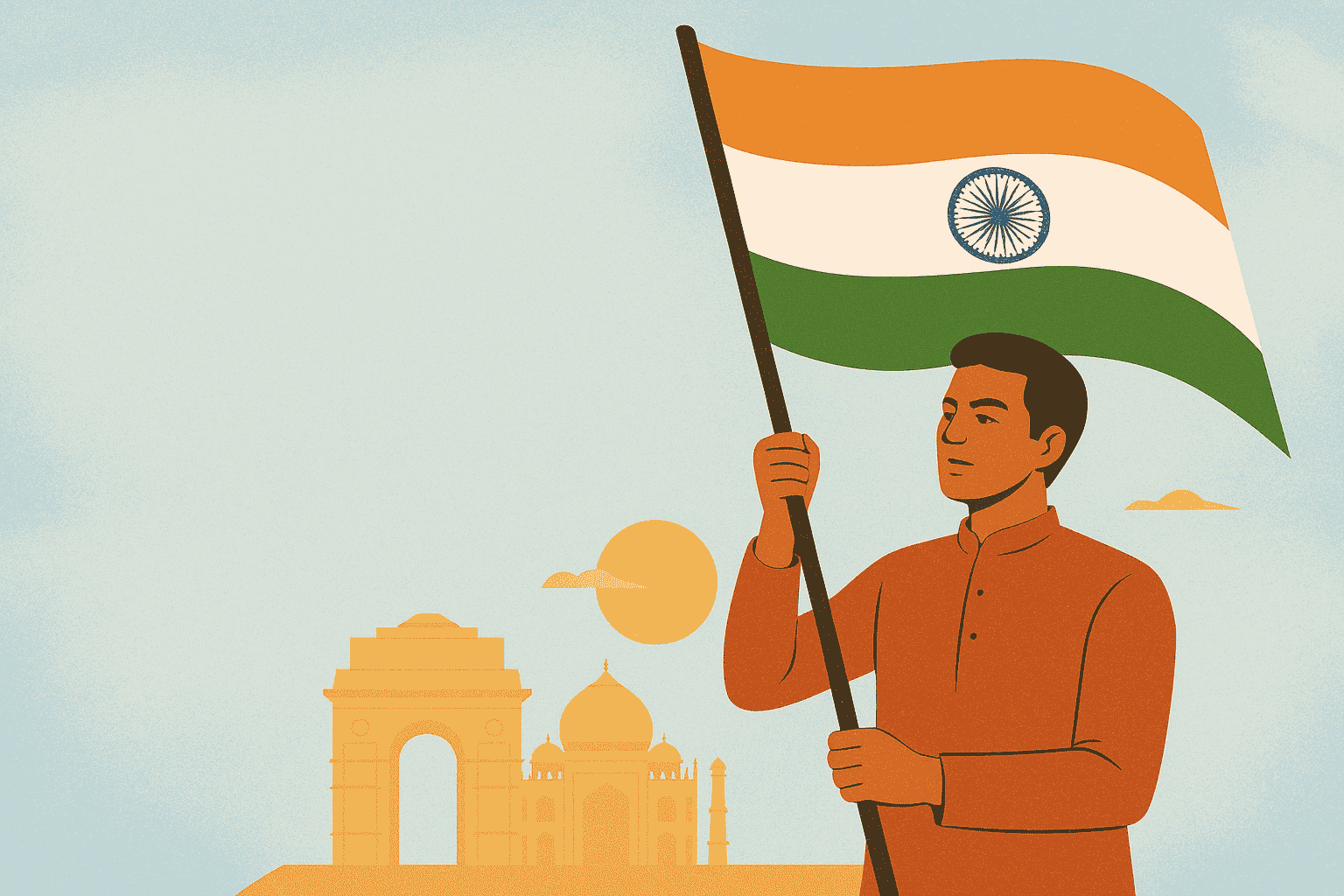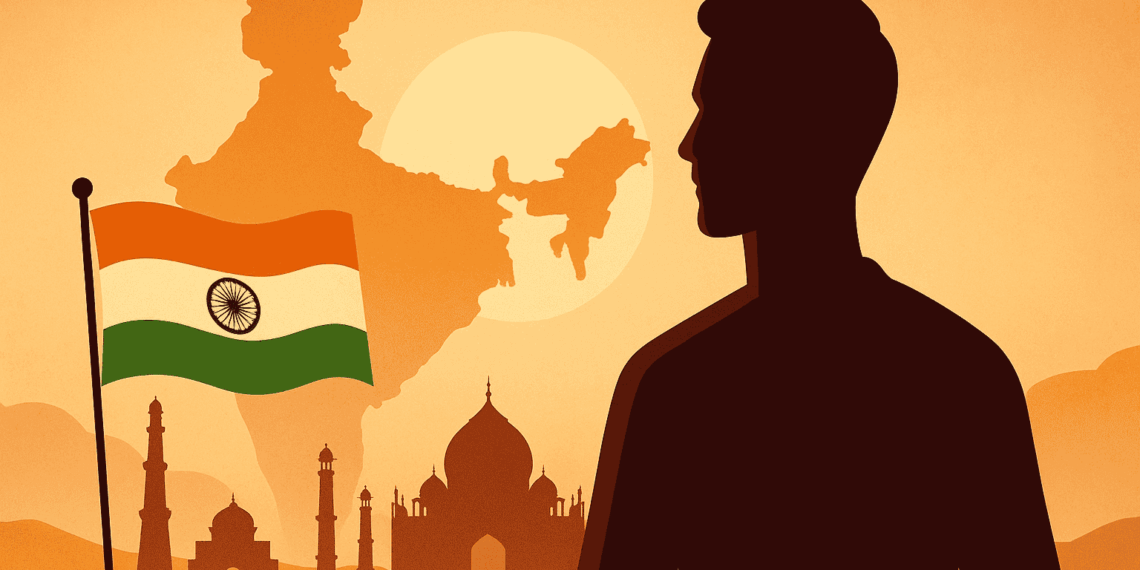Contents
- 1 Real Nation-Building: From Midnight Freedom to a Modern India
- 2 The Dawn That Changed Everything – 15th August 1947
- 3 79 Years Later – India in 2025
- 4 Wars and the Price of Security
- 5 Unsung Freedom Fighters & Modern-Day Heroes
- 6 Heritage: The Soul of India
- 7 The Love Indians Hold
- 8 Leadership in the Modern Era
- 9 Mindset of a Nation-Builder – How to Live Like Our Heroes
- 10 Final Thoughts
Real Nation-Building: From Midnight Freedom to a Modern India
Seventy-nine years ago, a tricolour rose in the Delhi sky, and a billion dreams began their journey. Today, under the same sky, we stand taller as a nation tested in war, tempered in sacrifice, and unstoppable in spirit. Our story is not written in ink, but in blood shed by soldiers, sweat shed by workers, and the prayers of mothers who gave their sons to the soil. This is India, a land where ancient rivers carry timeless civilisation, where temples and mosques rise side by side, and where the heartbeat of 1.4 billion beats in one rhythm: Bharat Mata ki Jai. 🇮🇳
Also read: What Is the Art of Doing Nothing and Why Do We Desperately Need This Skill?
The Dawn That Changed Everything – 15th August 1947

At the stroke of midnight, on 15th August 1947, India broke the chains of nearly 200 years of British colonial rule. Pandit Jawaharlal Nehru’s “Tryst with Destiny” speech signaled not just political freedom, but the beginning of the hardest journey, building a nation from the ground up.
Refugee camps swelled with Partition survivors, the treasury was empty, literacy stood at just 18%, life expectancy barely crossed 32 years, and industries were almost non-existent. Yet, hope was unbroken.
79 Years Later – India in 2025
This 15th August 2025, India celebrates 79 years of independence as the world’s fifth-largest economy, home to the fastest-growing tech hubs, space missions that touch the Moon, and a democracy that has survived wars, terrorism, and economic crises.
From a GDP of ₹2.7 lakh crore in 1950 to over ₹272 lakh crore today (IMF), India has proven that resilience is in its DNA.
Wars and the Price of Security
Freedom has been tested time and again — especially against Pakistan’s armed forces:
- 1947– 48 – Just months after independence, Pakistani invaders attempted to seize Kashmir. Indian forces, led by stalwarts like Major Somnath Sharma (Param Vir Chakra), defended the territory until a ceasefire secured most of the state.
- 1965 – The Indo-Pak war saw fierce tank battles in Punjab and Rajasthan. India held its ground, forcing Pakistan to retreat.
- 1971 – The war for Bangladesh’s liberation, lasting just 13 days, ended with over 90,000 Pakistani troops surrendering — the largest military surrender since World War II.
- 1999 – Kargil conflict: Indian soldiers reclaimed strategic peaks in sub-zero conditions, proving grit over aggression.
Each battle left graves on both sides, but India’s borders still stand, guarded by soldiers who live by the motto: “Service Before Self.”
Unsung Freedom Fighters & Modern-Day Heroes
(As earlier — Matangini Hazra, Peer Ali Khan, Kanaklata Barua, Usha Mehta, Velu Nachiyar, plus modern heroes like Capt. Vikram Batra, Maj. Sandeep Unnikrishnan, Lt. Col. Niranjan E.K., and Flt. Lt. Nivedita Choudhary.)
Heritage: The Soul of India
India is more than its borders — it’s a civilisation over 5,000 years old, home to the Vedas, Ayurveda, yoga, the Taj Mahal, Ajanta caves, and the teachings of Buddha, Guru Nanak, and countless saints.
It’s the land of Kumbh Melas that gather millions in devotion, of Diwali lamps that light entire cities, and of languages, music, and dance forms that carry the stories of generations.
The Love Indians Hold
Whether abroad or at home, the love for India is unshakable. It’s in the IT professional in Silicon Valley who sends money home for a village school. It’s in the farmer who works through monsoons. It’s in the soldier who calls from the border just to hear his child’s voice. This bond is not just patriotism — it’s family.
Leadership in the Modern Era
In recent years, PM Narendra Modi’s leadership has placed India more prominently on the global stage — from the successful G20 Summit in Delhi to championing the “Make in India” and “Digital India” initiatives, to expanding infrastructure and pushing space achievements like Chandrayaan-3.
His speeches on Independence Day from the Red Fort have consistently called for unity, cleanliness, and self-reliance (Atmanirbhar Bharat), echoing the same self-discipline our freedom fighters lived by.
Mindset of a Nation-Builder – How to Live Like Our Heroes
(As earlier Duty First, Courage Under Fire, Unity in Diversity, Service Without Spotlight, Lifelong Learning now tied with examples from freedom fighters, soldiers, and citizens.)
Final Thoughts
Independence Day is not the end of the freedom struggle; it is the daily renewal of a promise. A promise to be worthy of the tricolour that flies over us.
The wars we fight today may be against poverty, corruption, and division, but the weapon remains the same: the unbreakable will of the Indian people.
If those who bled for India could see us today — a billion strong, a billion dreams, still standing together, perhaps they would smile and say, “Yeh Bharat hai… and its best is yet to come.”
To understand the global context of nation-building, you can refer to this Wikipedia article on nation-building.

